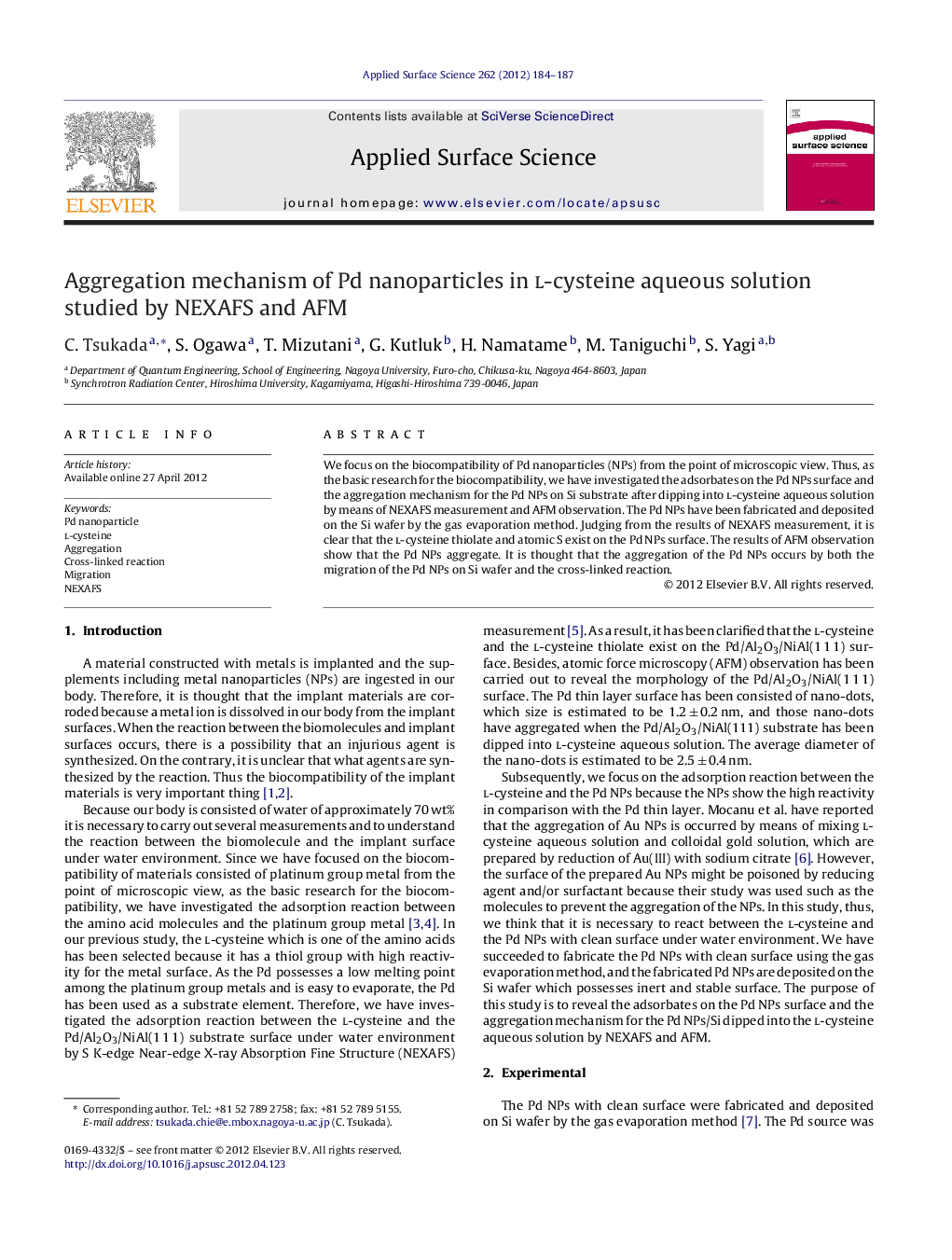| Article ID | Journal | Published Year | Pages | File Type |
|---|---|---|---|---|
| 5360926 | Applied Surface Science | 2012 | 4 Pages |
We focus on the biocompatibility of Pd nanoparticles (NPs) from the point of microscopic view. Thus, as the basic research for the biocompatibility, we have investigated the adsorbates on the Pd NPs surface and the aggregation mechanism for the Pd NPs on Si substrate after dipping into l-cysteine aqueous solution by means of NEXAFS measurement and AFM observation. The Pd NPs have been fabricated and deposited on the Si wafer by the gas evaporation method. Judging from the results of NEXAFS measurement, it is clear that the l-cysteine thiolate and atomic S exist on the Pd NPs surface. The results of AFM observation show that the Pd NPs aggregate. It is thought that the aggregation of the Pd NPs occurs by both the migration of the Pd NPs on Si wafer and the cross-linked reaction.
Graphical abstractDownload full-size imageHighlight⺠We focus on the biocompatibility of Pd nanoparticles (NPs) for l-cysteine under water environment. ⺠The Pd NPs have been fabricated and deposited on Si wafer by gas evaporation method. ⺠When the Pd NPs/Si has been dipped into l-cysteine aqueous solution, the l-cysteine has selectively adsorbed on Pd NPs surface and existed as the l-cysteine thiolate, atomic S and l-cystine. ⺠Moreover, the aggregation of Pd NPs occurs by the migration of Pd NPs on Si and the cross-linked reaction between l-cysteine thiolate molecules adsorbed on Pd NPs.
